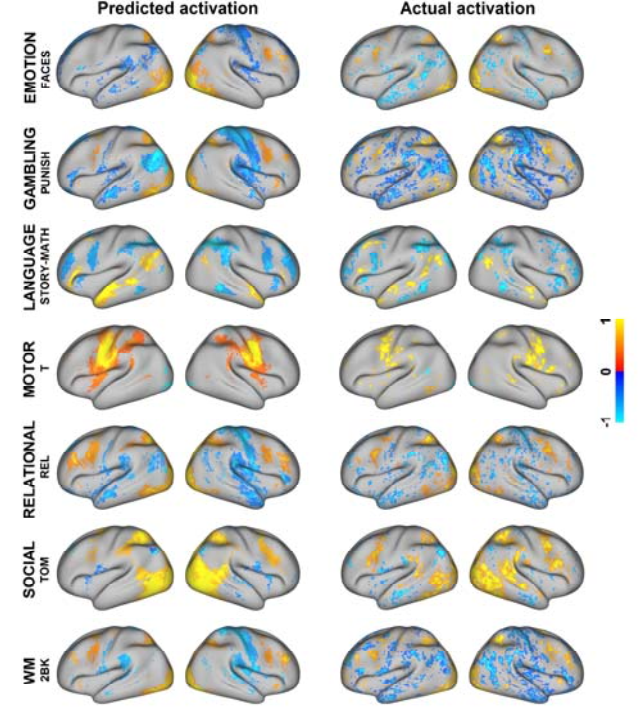Hierarchy of Connectivity–Function Relationship of the Human Cortex Revealed through Predicting Activity across Functional Domains
Dongya Wu1,2,6, *, Lingzhong Fan1,2,6, *, Ming Song1,2, Haiyan Wang1,2,6, Congying Chu1,2, Shan Yu1,2,6, Tianzi Jiang1,2,3,4,5,6
*Dongya Wu and Lingzhong Fan contributed equally to this work.
1Brainnetome Center, Institute of Automation, Chinese Academy of Sciences, Beijing 100190, China
2National Laboratory of Pattern Recognition, Institute of Automation, Chinese Academy of Sciences, Beijing 100190, China
3CAS Center for Excellence in Brain Science and Intelligence Technology, Institute of Automation, Chinese Academy of Sciences, Beijing 100190, China
4The Clinical Hospital of Chengdu Brain Science Institute, MOE Key Lab for Neuroinformation, University of Electronic Science and Technology of China, Chengdu 625014, China
5The Queensland Brain Institute, University of Queensland, Brisbane, QLD 4072, Australia
6University of Chinese Academy of Sciences
Abstract
Many studies showed that anatomical connectivity supports both anatomical and functional hierarchies that span across the primary and association cortices in the cerebral cortex. However, it remains unclear whether a hierarchy of connectivity-function relationship (CFR) exists across the human cortex as well as how to characterize the hierarchy of this CFR if it exists. We first addressed whether anatomical connectivity could be used to predict functional activations across different functional domains using multilinear regression models. Then we characterized the CFR by predicting activity from anatomical connectivity throughout the cortex. We found that there is a hierarchy of CFR across the human cortex. Moreover, this CFR hierarchy was correlated to the functional and anatomical hierarchy reflected in functional flexibility, functional variability, and the myelin map. Our results suggest a shared hierarchical mechanism in the cortex, a finding which provides important insights into the anatomical and functional organization of the human brain.

Figure 1. Comparison between the actual and predicted activations
